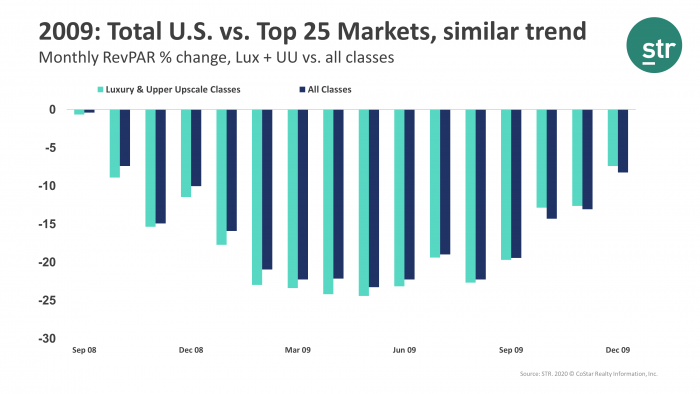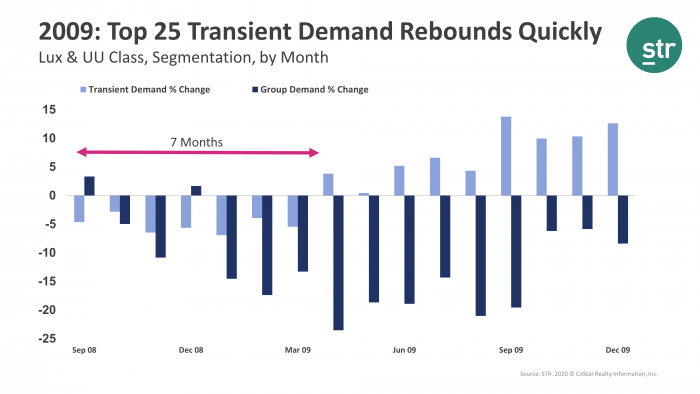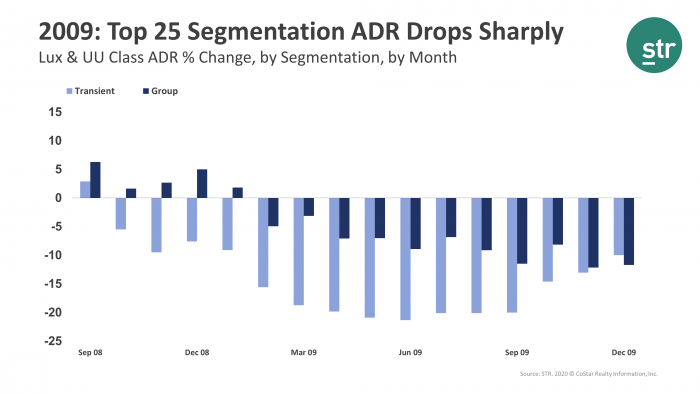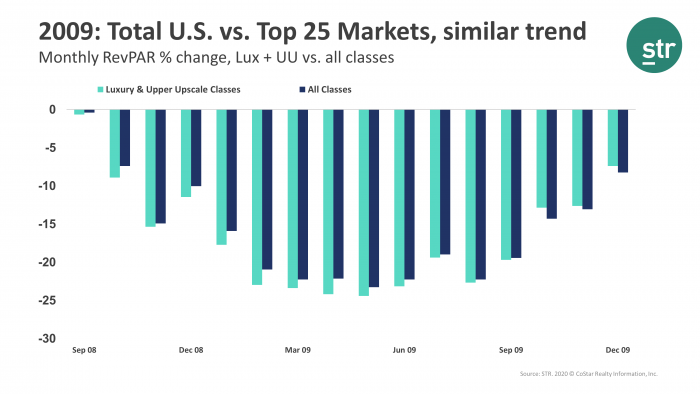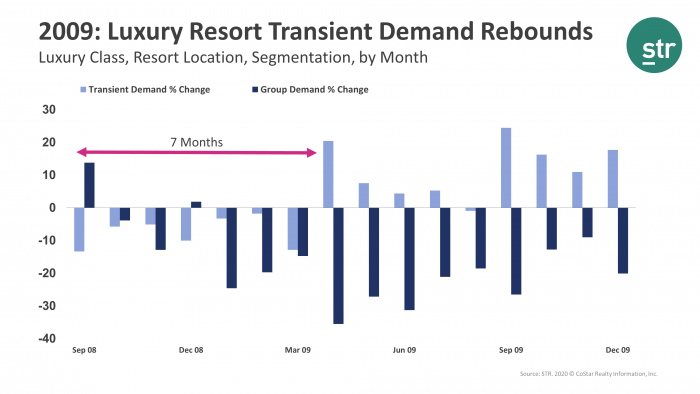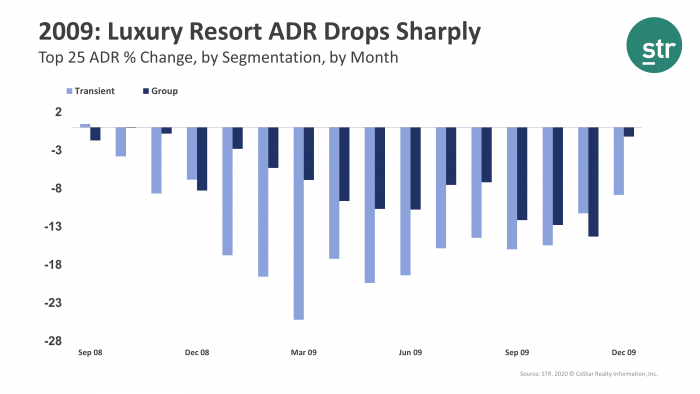Hotel performance data from 2009 shows that Transient demand in the major markets rebounds quickly as consumers take advantage of steep discounts. Luxury resort hotels see transient demand rebound quite quickly as well.
Outlined below are the percentage changes in revenue per available room (RevPAR) for all hotels in the Top 25 Markets vs. the high end of the market only—Luxury and Upper Upscale classes together also represent the sample for STR’s segmentation data.
It is quite clear that RevPAR declines steepen (to -25%) in the larger markets as the financial crisis deepened and the economy slid into recession. What is not shown in this chart is that RevPAR changes did not turn positive until January 2010 (Lux & UU) and March 2010 (total market).
